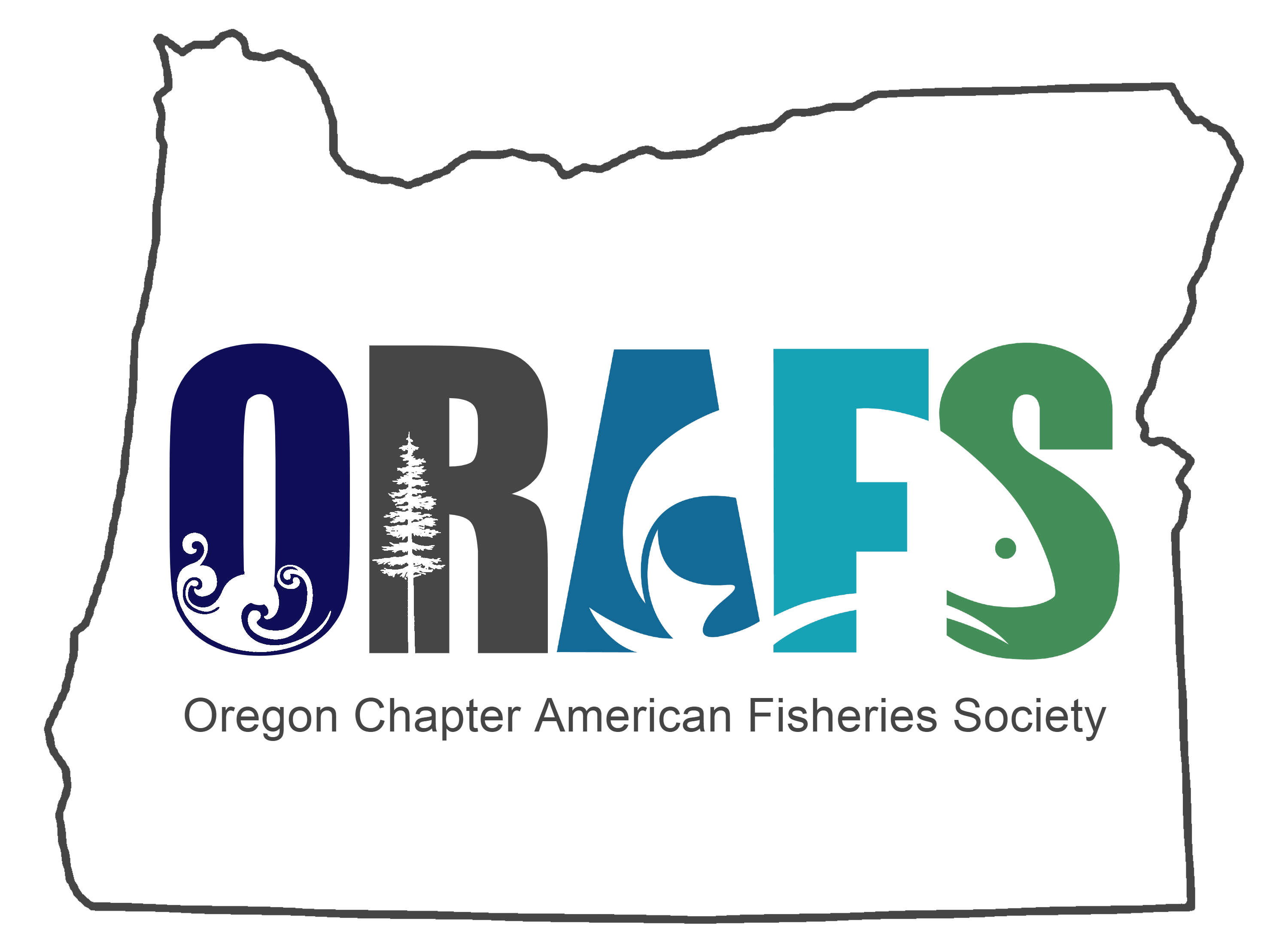20 January 1998
Ms. Debra Sturdevant
Oregon Department of Environmental Quality
811 SW Sixth Ave.
Portland, OR 97204-1390
VIA FAX to 503-229-5850
Dear Ms. Sturdevant:
The Oregon Chapter of the American Fisheries Society (ORAFS) appreciates the opportunity to comment on the Department of Environmental Quality’s proposed administrative rules addressing water quality certification for federal grazing permits (draft OAR 340-048-0100 through 340-048-0160) Our comments address several recommendations for improving the monitoring activities to determine if aquatic conditions are improving or degrading as a consequence of land use.
ORAFS is a volunteer organization of professionals in fisheries and aquatic sciences. We have over 500 members in Oregon, representing a diverse mix of scientists in federal, state, and tribal agencies, higher education, and in the private sector. A principal part of our Chapter mission is promoting the application of sound science in the conservation and management of fisheries and aquatic resources. Because aquatic habitats are directly affected by the management of neighboring lands, we also promote a science-based approach to forest and upland management.
Monitoring of human activities and ambient conditions is critical for ensuring that provisions of conservation agreements and water quality standards are being met, that implementation of conservation activities is having the desired effects on aquatic ecosystems, and that there is an adequate information base for conducting the regional scale research needed for ecosystem management (Spence et al. 1996). This monitoring must be long-term to document the decadal trends in ecosystem condition that accompany natural and anthropogenic disturbances and to separate the effects of human activities from natural variation. It must be multiscale to assess the effects at site or reach scales as well as at basin, ecoregion, and state scales. Because there are 60,000 or so miles of relatively permanent streams in Oregon and because many agencies have regulatory and management missions relating to aquatic ecosystems, a statewide monitoring program must be interagency yet have common assessment questions, designs, indicators, reference conditions, and methods. Assuming the assessment questions relate to all streams or all riparian landowners in the state, it is unwise and unfair to regulate only those that DEQ has found in violation of standards. Based on preliminary data from a USEPA probability survey in summer 1997, the majority of stream miles in Oregon violate current temperature standards for salmonid rearing. In other words, the temperature problem is much larger than previously suggested by DEQ’s subjectively selected sites, the sampling method is inaccurate and imprecise, and/or the temperature criterion is too stringent.
Because of the scale of the problems and the extent of the resource, a probability-based statistical survey design is recommended. See Landers et al. (1997) and Paulsen et al.(In Review) for problems resulting from inappropriate sampling designs used to assess aquatic resources across large areas. Because we are ultimately concerned with aquatic biota, we advocate quantitative sampling of both vertebrate and macroinvertebrate assemblages–along with a number of physical and chemical habitat parameters–during the same site visit. There are numerous databases on just fish, just benthos, just water quality, just physical habitat, or just land use that cannot be rationally interpreted because other key ecosystem components are missing. If we are to embrace ecosystem management we must embrace ecosystem monitoring, which means monitoring all these components. This will require far greater interagency cooperation than has been heretofore seen, but the Oregon Plan offers a promising mechanism for achieving it.
The new rules appear to be a paper exercise that places the burden of proof on the permittee for water quality certification. We recommend that the requirements of certification be strengthened to require quantitative information on water quality, with photographs as auxiliary information. The requirements are flexible, ostensibly to allow for differences in climate, geology, topology, soil development, and potential vegetation. However, we recommend that the parameters under consideration be explicitly listed in the draft certification evaluation criteria. To ensure fairness to the permittee, and to determine compliance, a monitoring plan to determine watershed and catchment conditions should be in place at the time of certification. Monitoring requirements are particularly important in circumstances when there is uncertainty about whether the proposed activity will degrade water quality, or prevent an improving trend. Without such monitoring, we are concerned that the water quality certification process will fail to meet its intended goals to aid in aquatic resource conservation and recovery in Oregon.
We appreciate the opportunity to comment on the proposed rules. Please recognize that the Oregon Chapter of AFS is not only interested in reviewing proposed rules. Our membership, through our Natural Production and Aquatic Habitat Committees, would welcome more direct and active involvement with rule development and training in field methods. Do not hesitate to contact me if you are interested in our assistance in both areas.
Sincerely,
Hal Weeks, President for the Executive Committee
c. Paula Burgess, State Capitol
LITERATURE CITED
Landers, D.H., R.M. Hughes, S.G. Paulsen, D.P. Larsen, and J.M. Omernik. In Press. How can regionalization and survey sampling make limnological research more relevant?. Verh. Internat. Verein. Limnol.
Paulsen, S.G., R.M. Hughes
